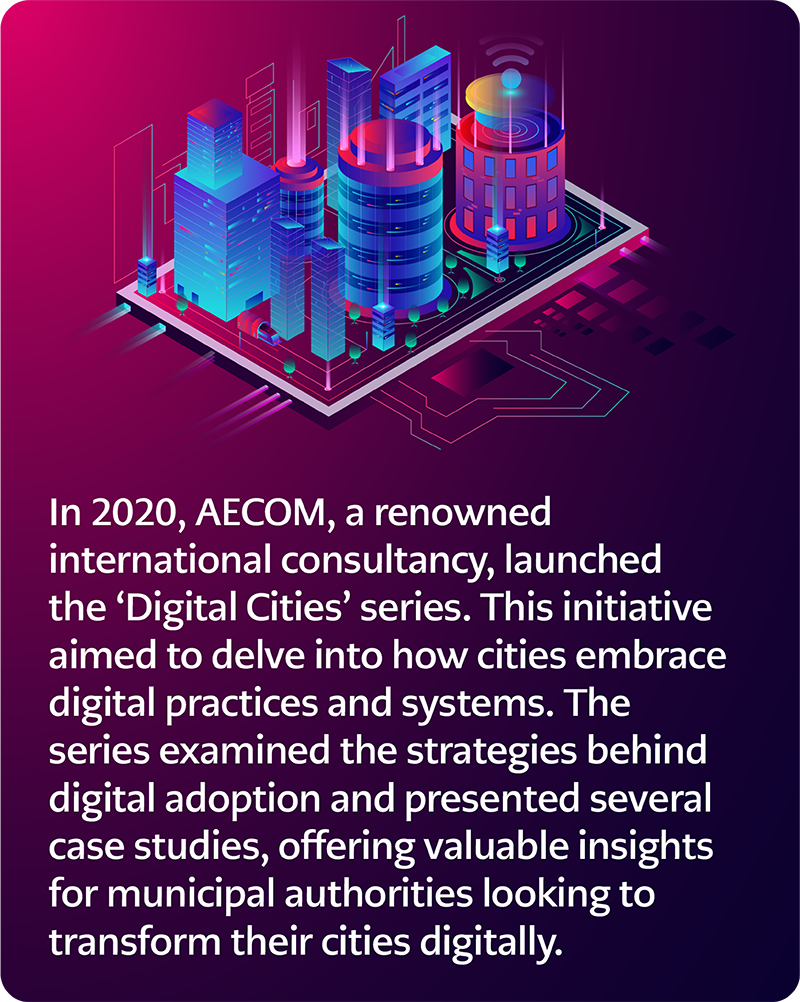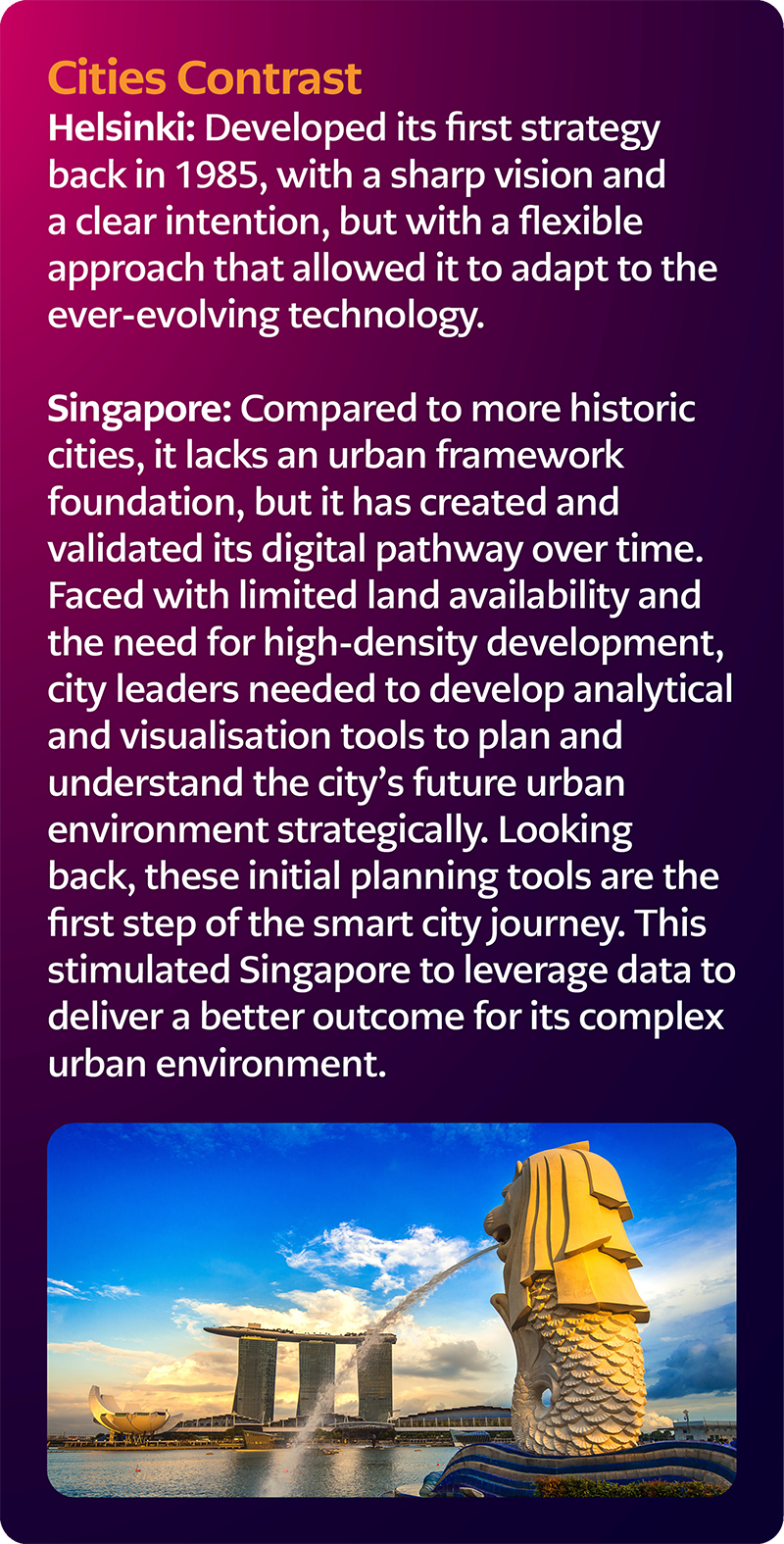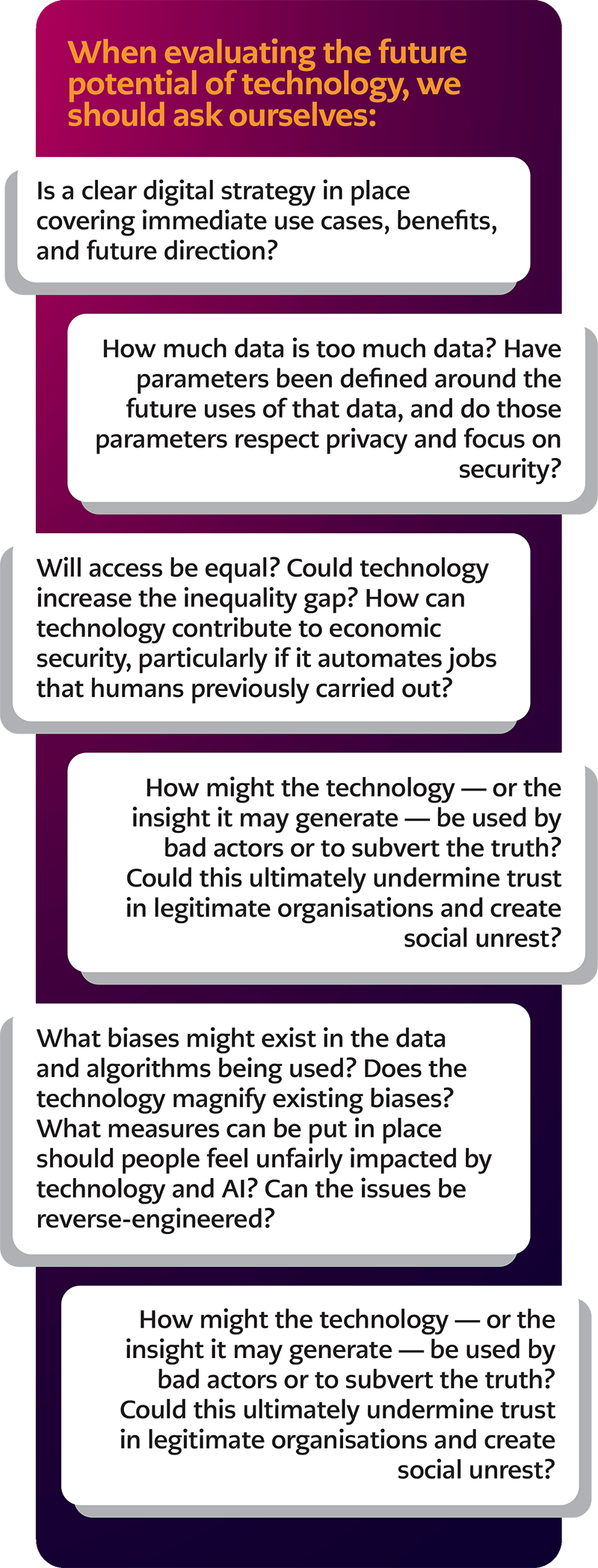The Future of Digital Cities
Barely scratching the surface of the AI impacts and benefits in our lives, some decry the risks and perils that might arise if AI is misused - especially at a city level


These days, when we think “digital”, inevitably, the notion of Artificial Intelligence (AI) arises and the great potential this holds for us. This has been amplified by the changes in how we work. Dealing with the COVID-19 pandemic has led to remote working and significant technological change, but the speed at which generative AI has emerged has taken many by surprise. It is safe to say we have barely scratched the surface of the immense impact that AI can have on our everyday lives. However, despite its benefits, some decry the risks and perils that might arise if AI is misused -especially at a city level.

From being technology-centric to context-adaptative
There is a shift in focus from being technology-centric to context-adaptative. In the past, cities wanted to buy the best and most efficient systems; sadly, this has proved to be a disastrous recipe for user abandonment and obsolescence. Technology and data are better applied to deliver better outcomes by comprehending citizen needs based on people and experiences. Cities should, therefore, start by understanding their current state to identify their challenges and what is being done about them.

Digital city programmes should be focused on people
In simple terms, technology should be a tool to promulgate the concept of “shared public value” in the form of more liveable spaces and better equity, whereby the delivery of services is integrated around people. By producing a road map—that includes a consensus strategy, inclusiveness framework, and tech-neutral approach—that can be shared with its citizens, cities may enter the process at various stages of digital readiness.
Equity must be a central tenet of the decision-making process
Delivering technology without an informed citizen base rarely achieves the desired impacts. Broadconsultation, ideation and co-creation across all people, organisations and citizens enhance solutions. However, as the latter is developed, equity must be a central tenet of the decision-making process. While a digital city may have arrived at its intended solution, it cannot be assumed this solution can simply be deployed, turned on, and everything will function as intended; people should be regarded as the fundamental reason for digital city ecosystem development – otherwise, they could be the critical failure point for digital cities.
Importance of governance
Another key finding is that delivering a successful digital city programme must pay detailed attention to governance. At a city level, governance comprises a balanced approach to managing risks and opportunities in decision-making and providing guidelines on what interests should be prioritised for the city's and its stakeholders' greater good. Factors such as policymaking, distribution of responsibilities, optimisation of scarce resources, equality and social welfare are all critical factors in this process and require precise and agreed governance.
For instance, NEOM, the new urban area planned by the Kingdom of Saudi Arabia to be built in its northwestern Tabuk Province, focuses on leveraging cognitive technology to create a future driven by consented data usage. This inclusive and collaborative approach aims to bridge the digital divide, promote sustainability, and shape the future of work and living. To promote transparency and achieve consensus in data exchange, NEOM has developed a management platform to grant residents control over who can access their data and the intentions behind its usage.

In addition, governance is not just about controls and compliance—although these are clearly necessary to protect systems and avoid abuses and threats to society, unwitting or deliberate. Governance must also encourage innovation, particularly in the digital arena.

Dealing with the COVID-19 pandemic has led to remote working and significant technological change.
Circling back to technology
Technology should be a means to a more equitable society in general and one where the citizens have real agency and control. The future of cities cannot be imagined without thinking about technology. However, the use of technology should not be diverted from achieving the goals of the common good. Digital systems need to be designed with users in mind. This may seem obvious, but this is overlooked when governments provide systems for citizens that quickly become user-unfriendly, inaccessible, isolated, and obsolete. Connecting suitable systems (interoperability) and accessibility (open sourcing) should be implemented with the right users in mind.
As the reliance on AI and other intelligent machines increases, we need to consider what this means through the extension of technology and how we can get the best implementation decisions in our digital-led lives. We dream of positive outcomes, but what if the technology we introduce has the opposite effects?

Imagining how these things might prevail with digital city solutions is a critical step towards preventing them from happening.
The future of cities is happening as we read this article.
It is worth remembering that generative AI is mostly about creating new content or analysing data, but with limited understanding and context. It can produce outputs that mimic human styles and patterns but cannot ‘think’ for itself. AECOM, therefore, concludes that “although hypothetical, the next potential wave of AI, known as General AI, promises to give the true raw ability to understand and learn any intellectual task that a human can do. If this technology becomes a reality, it willaccelerate the pace of change, requiring cities to adapt faster than ever we have seen before.”
Dr Thomas Tang has over 25 years of experience advising public and private sector organisations in sustainable change and innovation. He has been a consultant, corporate director and volunteer in different fields of sustainability, including climate change, green technology, urban design, stakeholder engagement, low-carbon living and social impact. He has written books and numerous articles, as well as spoken on his views on topics related to sustainability at international forums.






